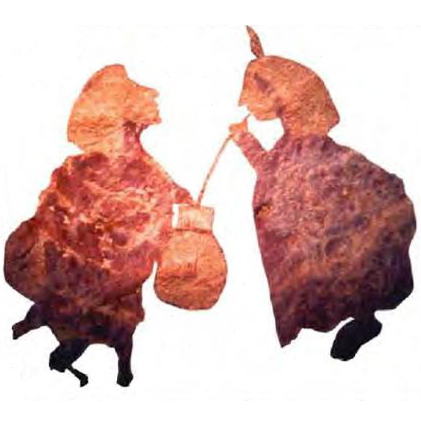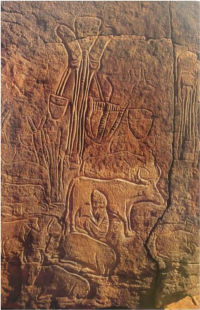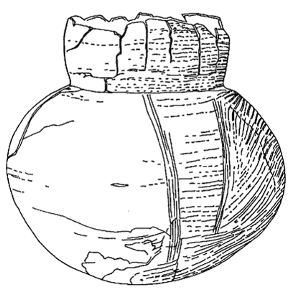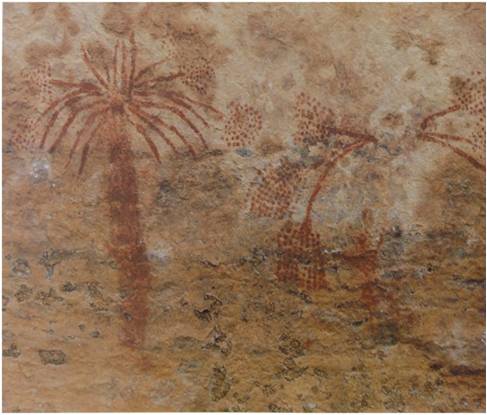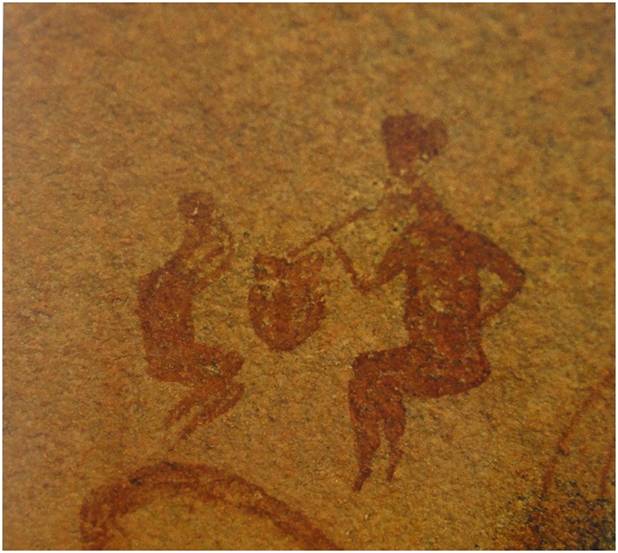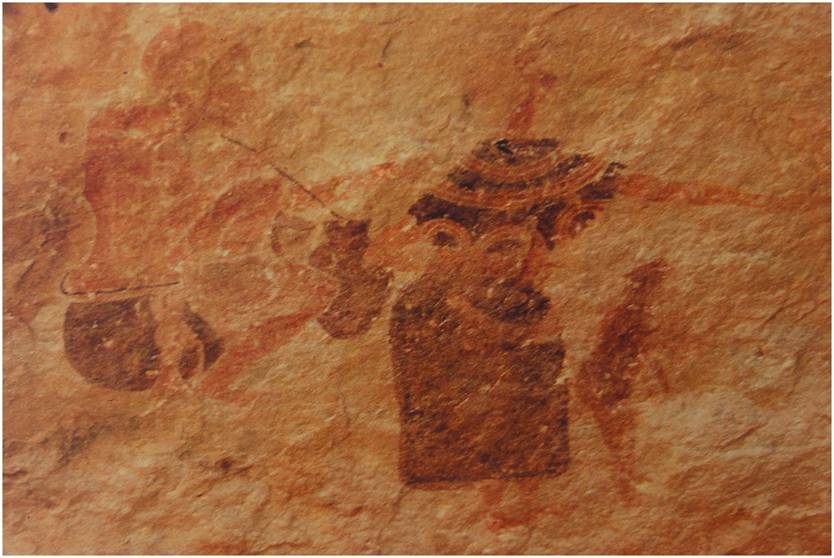Your search results [1 article]
The advent of beer in Africa before dry climate
The birth of the brewery across the African continent remains a mystery. There is no doubt that the Nile Basin has been operating at very early times as a south-north corridor. Men, technical and material goods constantly traveled up and down, as soon as the predynastic times in Upper Egypt and southward. The Nile has early connected very distant african areas, mainly the highlands of Ouganda, Kenya, Tanzanie and the sudanese valley with the near eastern world through the Egypt.
Men or women drinking.
Rock carving of Tassili n'Ajjer.
The Egyptian nilotic axis has played a major role for the african brewery in the eastern part of the continent. The oldest evidence of beer production goes back to the Predynastic times in Upper Egypt (3500 BC at Hierakonpolis). But can we consider the Sudano-Egyptian area as the only brewing basin in Africa?
The domestication of some african rice and millets, their spread inside the african continent from West to East suggests another westernmost craddle for the domestication of grains in Africa, an area centered on the upper Niger basin.
Tassili-n’Ajjer : scene of herding.
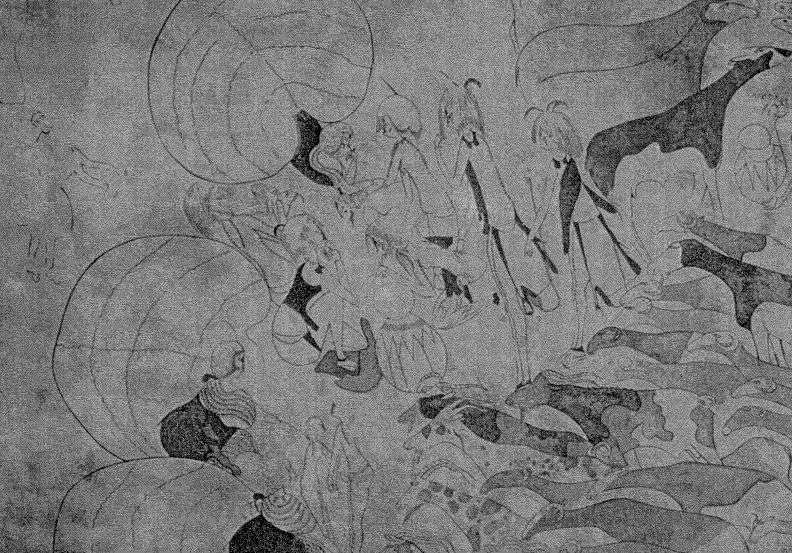
Between 6000 and 4000 BC, the sahelian african climate was wetter. The Sahara was not a desertic barrier hostile to migration between North and South of the continent, but a territory watered and studded with fertile oases.
The desertic rocky montains of Ténéré and Tassili-n'Ajjer (South Algerian Sahara) and Aïr (Niger North) have abundant remains of herbivorous animals we meet now further south (giraffe, elephants, hippos, buffalo, antelope, etc.). These rocky deserts are not covered completly nowadays by sands.
The slow desertification of the region begins at the third millennium BC. It fundamentally changes the lifestyle and the type of human societies able to live in an arid environment. Connections between North Africa and the Niger basin are made more difficult. If the scientific interpretation of rock carvings from this period is correct, it seems that these societies have become more martial (chariots, weapons, fighting).
Resource scarcity and population migrations might explain the violent confrontations. Human cultures and landscapes prior to the third millennium are so upset that the modern traveler makes much effort to imagine a green region, abounding in game, covered with wild grasses and grains.
Messak, rock carving : milking with goatskins and jars.
Around 2500 BC, populations of these regions invented ceramics and stone grinders. Some vessels of this Neolithic period found by archaeologists still contained grains.
The food storage of grain and liquids is proven by carvings with pole for hanging goatskins and containers at Messak (see picture of Messak rock carving on right).
A rock painting depicts palm trees, a possible source of date wine. The mere presence of date palm indicates a humid climate, or at least abundant water sources.
The depiction of herds is another hint of human activity livestock-oriented requiring grazing. One might think that the conditions existed for the emergence of human groups enough settled on a fertile territory to produce and drink fermented beverages.
Tassili-rock painting : palm and date trees.
Another cave painting show drinking scenes with a kind of drinking-straw. These scenes were compared to the traditional way of collectively drinking beer adopted by certain peoples of East Africa. Several thousand years of social and historical changes separate these two ages and make such a comparison inappropriate. A more valid one would select the common habit to drink beer with a straw in contemporary Mesopotamia during third and second millennium BC.
However, it is presumptuous to name these beverages (date wine, grain beer, mead, fermented milk?), and even believe that they have necessarily undergone one alcoholic fermentation. Among pastoral peoples, milk and mead predominate.
Moreover, the assumption of beers brewed form millet, sorghum or finger millet (grain domesticated in this part of Africa) remains flimsy [1]). We have no chemical analysis of residue impregnated in pottery found by archaeologists in that area.
Furthermore, the domestication of millet is hard to prove. Unlike wheat or barley, the morphological changes in domesticated varieties are petty. It will be difficult to discern a deliberate human brewing action and one accidental fermentation. Only a rich archaeological context with numerous human activities can make the difference.
El-Medaforh (Tefedest). Sipping with drinking straws.
| ILLUSTRATIONS |
| Jean-Loïc Le Quellec 1998, Art rupestre et préhistoire du Sahara. Le Messak Lybien. Ed. Payot. |
| Yves et Christine Gauthier 1996, L'Art du Sahara. Coll. "Arts Rupestres", Seuil. |
Tassili-n’Ajjer : another drinking scene with a sipping straw.
[1] Finger millet (Eleusine coracana), teff (Eragrostis tef) and durra (Sorghum bicolor) have been domesticated in East Africa (Ethiopian highlands). But the finger millet had a second center of its domestication in the Niger basin.



